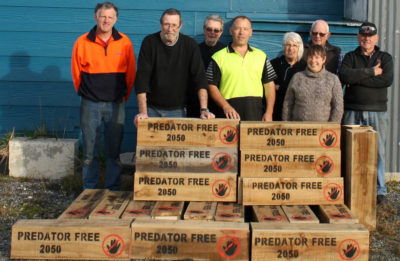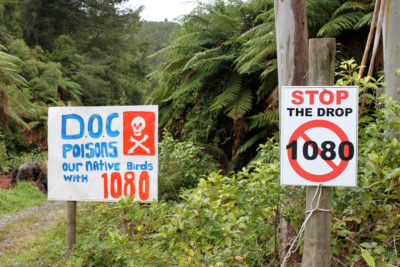At a moment of best-selling animal intelligence books and headlines about songbird language and grieving elephants, it’s easy to forget that nonhuman minds were until recently considered — by most serious-minded scientists, anyway — to be quite simple.
Well into this millennium, animal consciousness was regularly dismissed as either nonexistent or profoundly dissimilar to our own. Animals were considered “conscious in the sense of being under stimulus control,” as the famed psychologist B.F. Skinner opined so neatly in 1974, expressing a conventional wisdom that dated to the zoological musings of Aristotle. The notion of animals as thinking, feeling beings was relegated to the edges of serious discourse.
Those days are past, buried by an avalanche of scientific findings and history-of-science critiques. More people than ever worry about the welfare of farmed animals; pets are practically citizens; and wild animals too are increasingly regarded as beings with whom people share fundamental aspects of inner life. Yet in some places, that mind-denying legacy survives — including, say a small but vocal number of scientists, ethicists, and animal welfare activists, in conservation. In their eyes, the discipline devoted to protecting Earth’s life has a certain blind spot to the animals themselves.
“Conservation essentially developed in an era in which animals were automatons,” says Arian Wallach, an ecologist at the University of Technology Sydney in Australia. “There was a revolution in the recognition of sentience across the animal world,” and “conservation is only now coming to grips with the fact that this happened.”
Wallach identifies as a “compassionate conservationist,” the name taken by those critics of conservation’s tendency to focus on species and populations without much considering the well-being of individual animals and the ethical issues involved. “A compassionate conservation approach,” Wallach and others write in a recent Conservation Biology essay, “aims to safeguard Earth’s biological diversity while retaining a commitment to treating individuals with respect and concern for their well-being.”
Central to the compassionate conservation movement is a deep dismay at the practice of killing some animals to help others.
The implication might raise some hackles — few conservationists would consider themselves uncompassionate. As a historical critique of conservation’s framing, though, it rings true. “Conservation is engaged in the protection of the integrity and continuity of natural processes, not the welfare of individuals,” wrote biologist Michael Soulé, who is generally credited with founding the scientific discipline of conservation biology, in his seminal 1985 essay “What is Conservation Biology?”
Soulé’s way of thinking, says environmental philosopher J. Baird Callicott, was not unusual. It dovetailed with the hunting-focused wildlife management that formed conservation’s foundations in the early 20th century. So long as populations thrived, individuals merited little formal recognition. Neither did Aldo Leopold’s influential land ethic, with its call to view nature as “a community to which we belong,” spare much thought for individual animals. They don’t even appear in this decade’s so-called “New Conservation” debates over weighing the value of protected areas and human economic well-being in making conservation decisions.
Individual animals have instead been the province of animal welfare and, more recently, the related academic field of human-animal studies. Conservation stayed, in Soulé’s words, “conceptually distinct.” But as Callicott notes, “Now these two mutually exclusive lines of thinking about ethics beyond humans are converging in compassionate conservation. “It’s new and uncharted territory.”
The first rules of this territory: to do no harm, and to acknowledge the value of every individual’s life. Central to the movement is a deep dismay at the practice of killing some animals to help others; it doesn’t seem coincidental that many compassionate conservationists hail from Australia, a place where — along with nearby New Zealand and the region’s small islands — killing historically non-native mammals plays an outsized role in conservation.
Volunteers for New Zealand's Predator Free by 2050 campaign in front of predator traps, which are available for the public to borrow. New Zealand Department of Conservation
In Australia, where the government has pledged to kill 2 million feral cats, landscape-scale poisoning campaigns are a routine — and indiscriminate — part of efforts to protect native species. The same goes for New Zealand, where conservationists intend to protect native animals by exterminating all possums, rats, and weasels by 2050, and possum-killing fundraisers are held at elementary schools. While those programs are extreme in their scope and intensity, killing for the sake of conservation is certainly not limited to those nations.
To pick two recent examples, Scotland’s natural resources agency recently approved a controversial plan to protect shorebirds by killing ravens, and the U.S. Fish and Wildlife Service moved this spring to permit the killing of up to 18,270 cormorants blamed for depredating Midwestern fisheries. Such actions might comprise a relatively small proportion of all conservation activity, but they are not uncommon, and the new thinking of compassionate conservation sees them as existentially problematic.
“As a conservation community we have normalized the perpetration of significant, intentional, and often unnecessary harm against wildlife individuals,” write Wallach and her colleagues in the new paper. Given what’s now known about the “widespread sentience and sapience of many animals,” they state, “practices that categorically prioritize collectives without due consideration for the well-being of individuals are ethically untenable.”
In social media conversations about that paper, one biologist wondered if compassionate conservation even deserves to be called conservation. Another likened compassionate conservationists to vaccine denialists who wrongly claim that immunizations cause autism; just as doctors were pushed by that community to emphasize the importance of vaccines, this ecologist wrote, so might scientists be galvanized to “promote the reality of conservation needs and action.”
“There are situations where some form of killing is necessary” to protect biodiversity, says biologist Michael Soulé.
Soulé is more diplomatic. Compassion is a virtue, he affirms, and “we must be as compassionate to individuals as possible” — but there are limits. “As people who believe that our ultimate goal is to protect biodiversity, then there are situations where some form of killing is necessary,” he says. When native species are threatened by the descendants of species introduced by humans, “I think the survival of the native species that helps to maximize global diversity can trump the pain and suffering of some individuals.”
Michael Nelson, an environmental ethicist at Oregon State University and co-author of the new Conservation Biology paper, notes that compassionate conservationists may diverge on this issue. Some, such as Wallach and ethologist Marc Bekoff, one of the movement’s most prominent voices, consider killing to be unacceptable in any situation. Others, including Nelson, think it might be acceptable when there’s no other solution — but it’s at best a tragic, sorrowful last resort. Even that, though, would be an “amazing shift” from strategies that are quick to embrace lethality, Nelson says.
Both factions agree that a readiness to kill can mask deeper issues. Chris Darimont, a conservation biologist at the University of Victoria and the Raincoast Conservation Foundation, pointed to wolf-killing programs intended to protect caribou harmed by mining and forestry. In Australia, more effort seems to be devoted to killing animals than protecting habitat: For all the attention given to alien species, it’s been a decade since habitat there was last designated as critical for a threatened species, and that has happened just five times since Australia’s Environment Protection and Biodiversity Conservation Act was enacted in 1999.
“Killing for conservation does allow people to avoid addressing root problems,” Darimont says. Wallach recommends that conservationists look to ecology for solutions: her own specialty is dingoes, Australia’s widely-persecuted apex predators, who may be far more effective than culling programs at regulating foxes and feral cats. The same may hold for coyotes in the United States.
Signs opposing New Zealand's use of landscape-scale poisoning campaigns to eradicate non-native predators, such as rats and weasels. Eli Duke/Flickr
Wallach and other ecologists also suggested in a 2015 Trends in Ecology and Evolution paper that rather than being killed, apex predators should be allowed to thrive so they can regulate “novel ecosystems” — mixes of native and non-native species that have no precedent in the earth’s history, and which many conservationists consider impoverished. They worry that accepting ecological novelty is a big step down the slippery slope to a depauperate Earth dominated by a handful of weedy species.
Some scientists, however, argue that such judgements are tinted by a bias against non-native species. Many compassionate conservationists have taken up the cause: By refusing to accept non-natives as legitimate parts of nature, they say, people are blinded to their possibilities. Novel ecosystems might represent adaptations to a radically changed biosphere, with vital roles performed by unfairly-maligned species like wild donkeys or even feral pigs. Novel ecosystems, they say, might also be valued simply because every life matters; being open-minded toward them is itself an act of compassion.
“These critiques are captivating,” says Matthew Herring, an ecologist who works with Australian rice farmers to manage their fields to provide habitat for endangered bitterns. “They challenge much of what I was taught.” Though not a compassionate conservationist himself, Herring says he aspires to the principles, and their view of novel ecosystems resonates with his own observations. “Novel habitats now support globally endangered species,” he says. “Some of the ‘invasive’ species, such as European carp, provide critical food resources” to the bitterns he is working to protect.
Herring’s work, which he presented at the third International Compassionate Conservation Conference, held last November in Sydney, embodies a theme of coexistence that’s less attention-grabbing than objections to lethality, but is just as important. That conference, and a similar one held two years ago in Vancouver, featured a bounty of new approaches: not only non-lethal solutions, like remote-controlled robots that defend desert tortoises from raven populations swelled by the abundance of human food waste, but strategies for helping people live alongside animals.
Compassion doesn’t require avoiding all suffering, only unnecessary, human-caused harms, says ecologist Arian Wallach.
Some involve high-profile species with whom humans regularly come into conflict, such as keeping wolves away from livestock through a mixture of deterrents and management techniques, or accommodating the movements of Asian elephants in human-dominated landscapes. Others involve common creatures, such as prairie dogs and suburban rattlesnakes, and animals considered pests.
To Melissa Amarello, co-founder of Advocates for Snake Preservation, it’s a much-needed expansion of conservation’s focus. Much of her advocacy involves teaching people not to fear the common, venomous snakes they encounter — and often kill — in their own neighborhoods. This isn’t an important issue “for traditional conservation, because it’s not impacting a species of concern,” says Amarello, but “it doesn’t matter if they’re common or rare. What matters is that they exist.” That ethos applies to all the less-charismatic species who tend to go unappreciated, particularly in the current focus on urban nature, which has excited many conservationists hopeful that cities can become strongholds of biodiversity. Everyone enjoys a pretty migratory songbird, Amarello says, but compassion “helps open people’s eyes to some of the other animals.”
This focus on common animals might in some ways seem ill-suited to an era of mass extinction and extirpation. Can conservationists afford to devote their limited resources to helping people coexist with raccoons? Soulé fears that compassionate conservation could turn into an unworkable obligation to help every unwell animal or even interfere with natural processes, especially predation, that cause suffering.
Wallach counters that compassion doesn’t require avoiding all suffering — which, were it even possible, would cause ecological catastrophe — but only unnecessary, human-caused harms. Here the movement collides with recreational hunting, and many compassionate conservationists are extremely critical of the North American model of wildlife conservation, which gives governmental agencies focused largely on hunting, fishing, and trapping a central role in public conservation.
Research shows that prairie dogs have language and can talk to each other, which "compassionate conservationists" argue is a reason to put more value on the well-being of individual animals. Lindsay Wilson/Flickr
These agencies, they say, ignore animal advocates and too often support activities that are ethically or ecologically suspect, such as wildlife killing contests or the hunting of large carnivores. Some traditional conservationists might feel uncomfortable with that critique: so-called consumptive users have played a historically important role in conservation, and Darimont notes that scientists tend to be uncomfortable with animal rights.
Nelson worries that debates about compassionate conservation might yield even deeper divisions between these camps — a fate hinted at by two recent online postings, one decrying “animal liberation dressed up as conservation science,” and the other calling traditional conservation “a pathological disorder.” Yet compassion might also bring new supporters into the fold, according to Nelson. For instance, “it could motivate people who are interested in animal welfare,” he says, and even teach them to think about traditional conservation values — healthy habitats, intact ecosystems — in terms of helping individual animals flourish.
Embracing animal ethics also gives conservationists permission to talk about animals in ways that tend to be omitted from conservation discourse but may resonate far more with people for whom biodiversity or ecosystem services are abstract terms.
“When I talk to people about prairie dogs, I always start off with the ecological aspect. I tell them that prairie dogs are disappearing rapidly, and soon we might not have any. Their eyes glaze over,” says Con Slobodchikoff, a conservation biologist at Northern Arizona University. “Then I tell people that prairie dogs have language and can talk to each other. Their eyes light up. They start to empathize.”
Herring echoed his point. “Thinking big, about populations, evolution and so forth, is useful,” he says, “but because of its abstract nature it disconnects us from the animals we love, the animals we’re trying to protect.”






